Place Value
Year 5 have had a brilliant start to the year in all areas of school! They have thoroughly impressed with their appetite for learning and improving.
For Maths in particular, we have been looking at place value. The children have been using an array of methods to support their learning.



We have been using Denes, number lines, bar-models, counters and part-whole models to really show off how many different ways we can represent numbers!
In another area of the curriculum, we have enjoyed diving into our new class novel – Marianne Dreams. This has been the main focus for our Art topic, where we have incorporated artistic techniques such as cross-hatching, stippling and gradient into our artwork.

Ask your child what media has been used in the pieces of art above!
Mindfulness Matters
Following a very busy morning packed with learning, Year 2 settled down to enjoy some mindfulness.
What is mindfulness?
Mindfulness is simply… noticing what is happening right now.

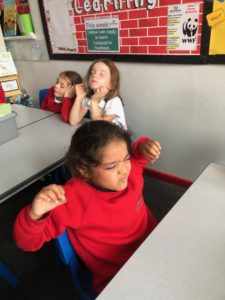
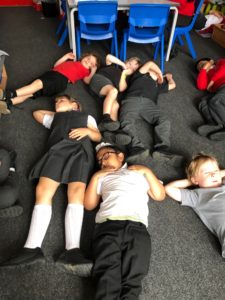


Mindfulness is taking notice of how your body feels and what your mind is doing. When we notice what is happening around us, it can help us to calm down when feeling sad, angry or frustrated. Mindfulness helps us deal with tough emotions and can make us happy and feel good.
Today, the children focused on their breathing and what happens to our bodies when we ex and inhale. Following this exercise, the class were calm and focused all afternoon.
Marianne Dreams
What a fantastic start to the year we’ve had! Year 6 have really settled in to being role models in class and around school with their enthusiasm and behaviour both exemplary.
Our first topic is all about our class novel – Marianne Dreams. It’s a topic driven by Art and children will have the chance to produce an individual art project at the end of it.
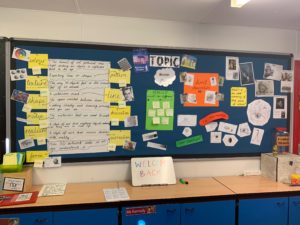
As you can see from our topic display, we’ve been learning lots of new vocabulary such as shape, colour and pattern.
The first medium that we are exploring is pencil and we’ve been stippling, cross-hatching and creating gradients. Depending on which grade pencil you use, these are either dark or light, smudgy or precise. The Y6 artists have been using these techniques to create line, form and texture. Ask your child: “What’s the difference between a 6B and a 6H?”
We’ve also learnt about three well-known artists this week: Leonardo Da Vinci, Adonna Khare and Albrecht Durer. Other vocabulary we’ve learnt is realism vs surrealism. Challenge your child to tell you which category they think each artist fits into!
Next up – printmaking!
First News
In Key Stage 2, children get to read First News once a week. First News is a child oriented newspaper.
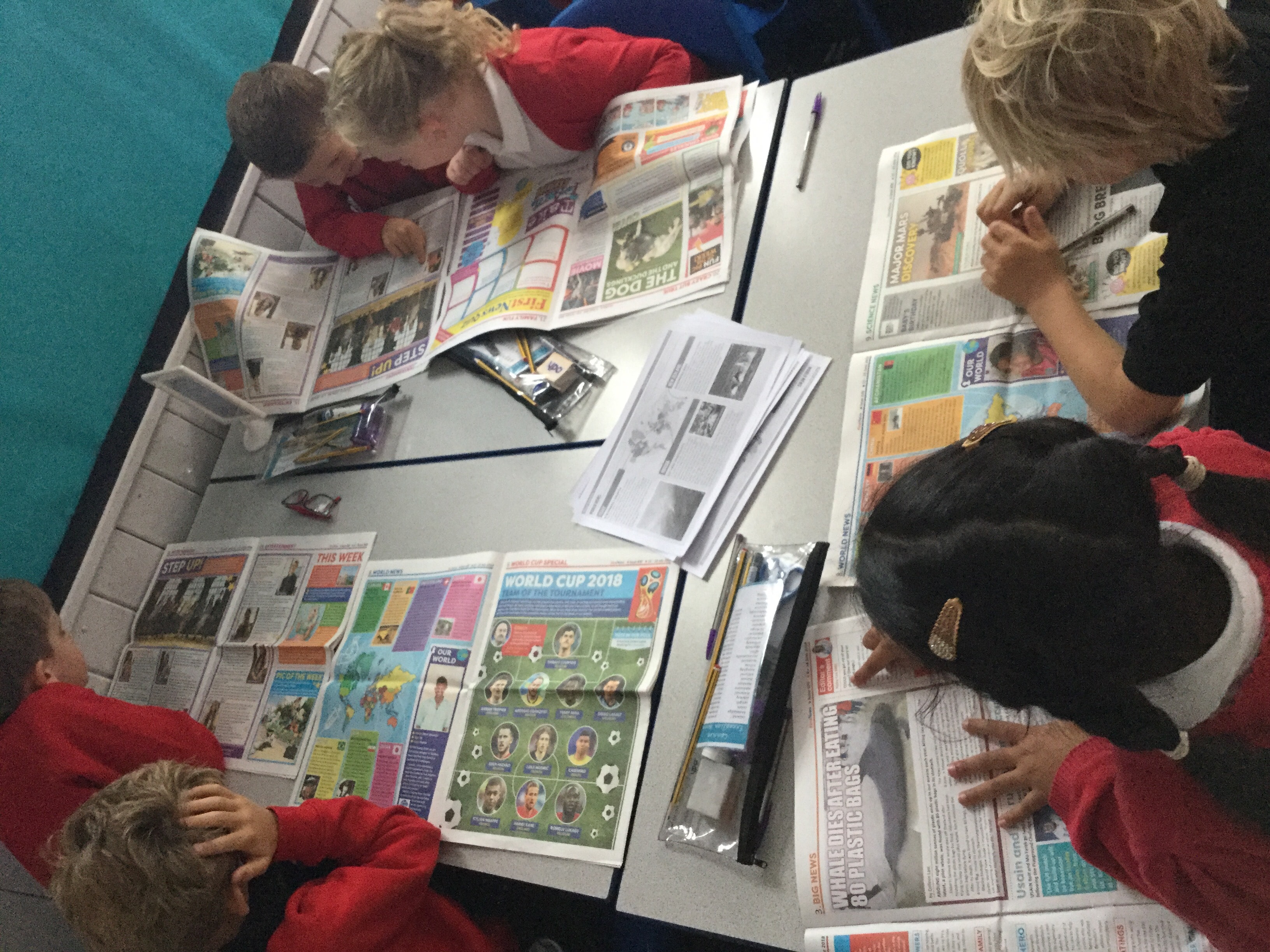
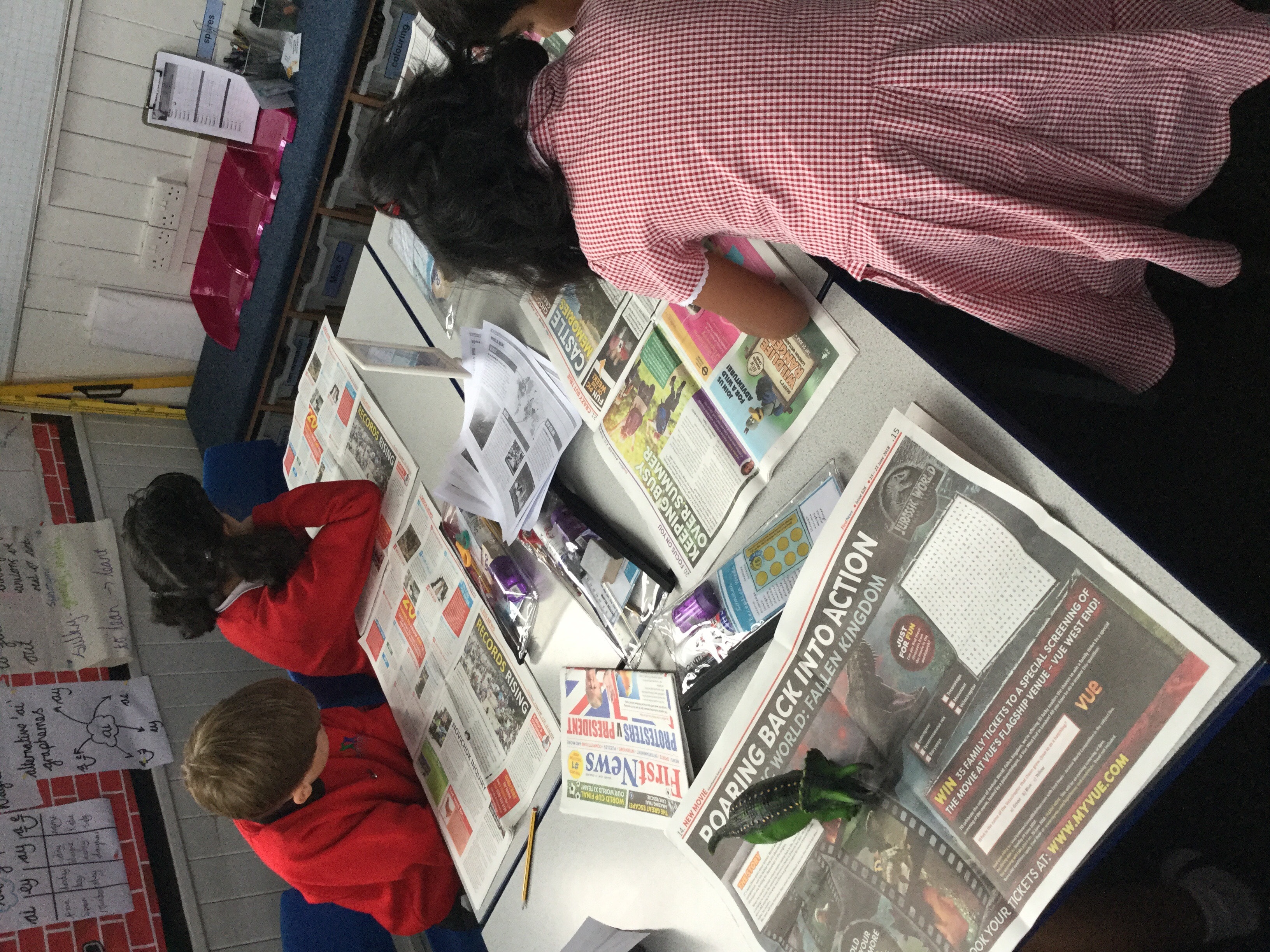
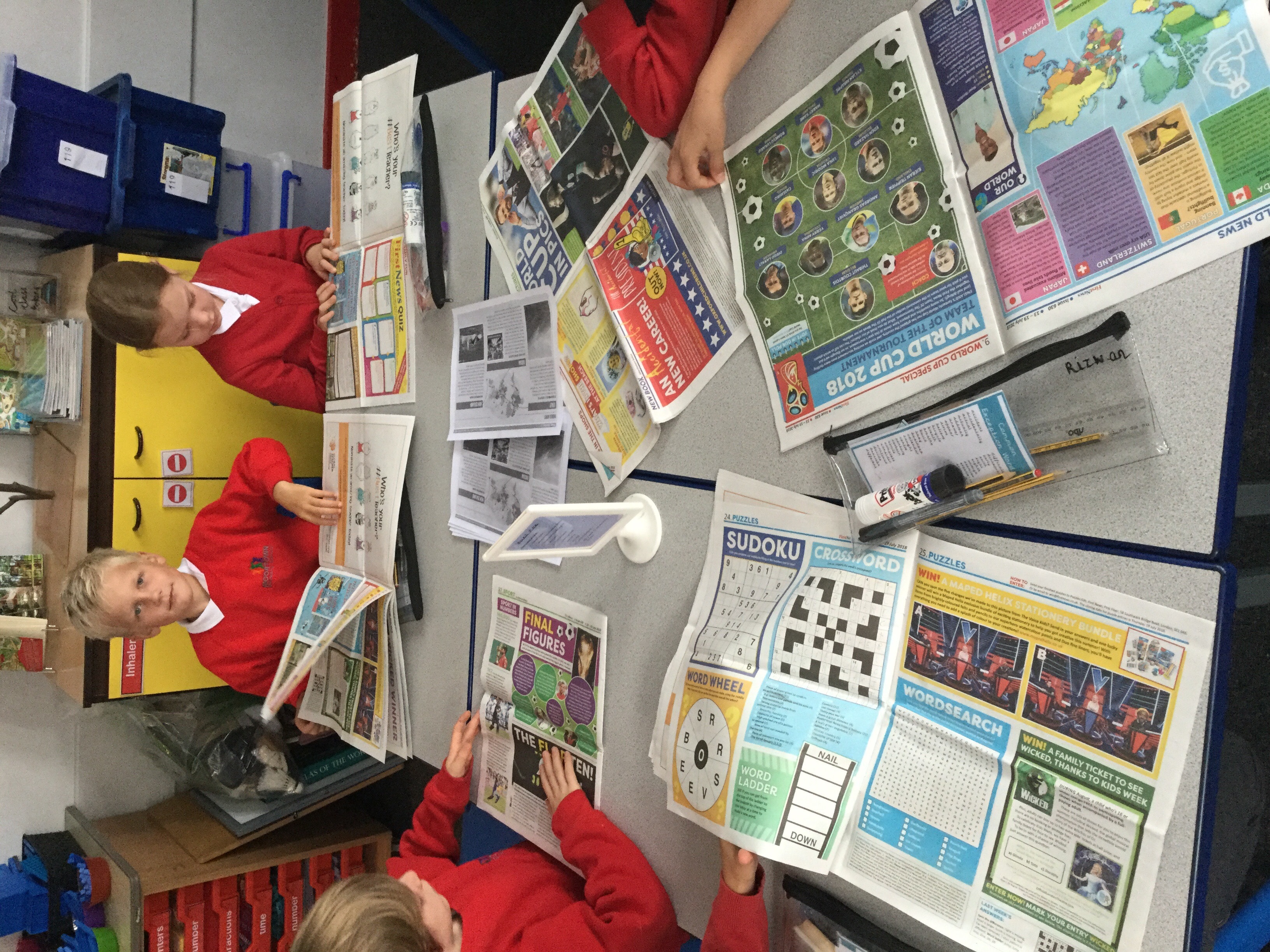
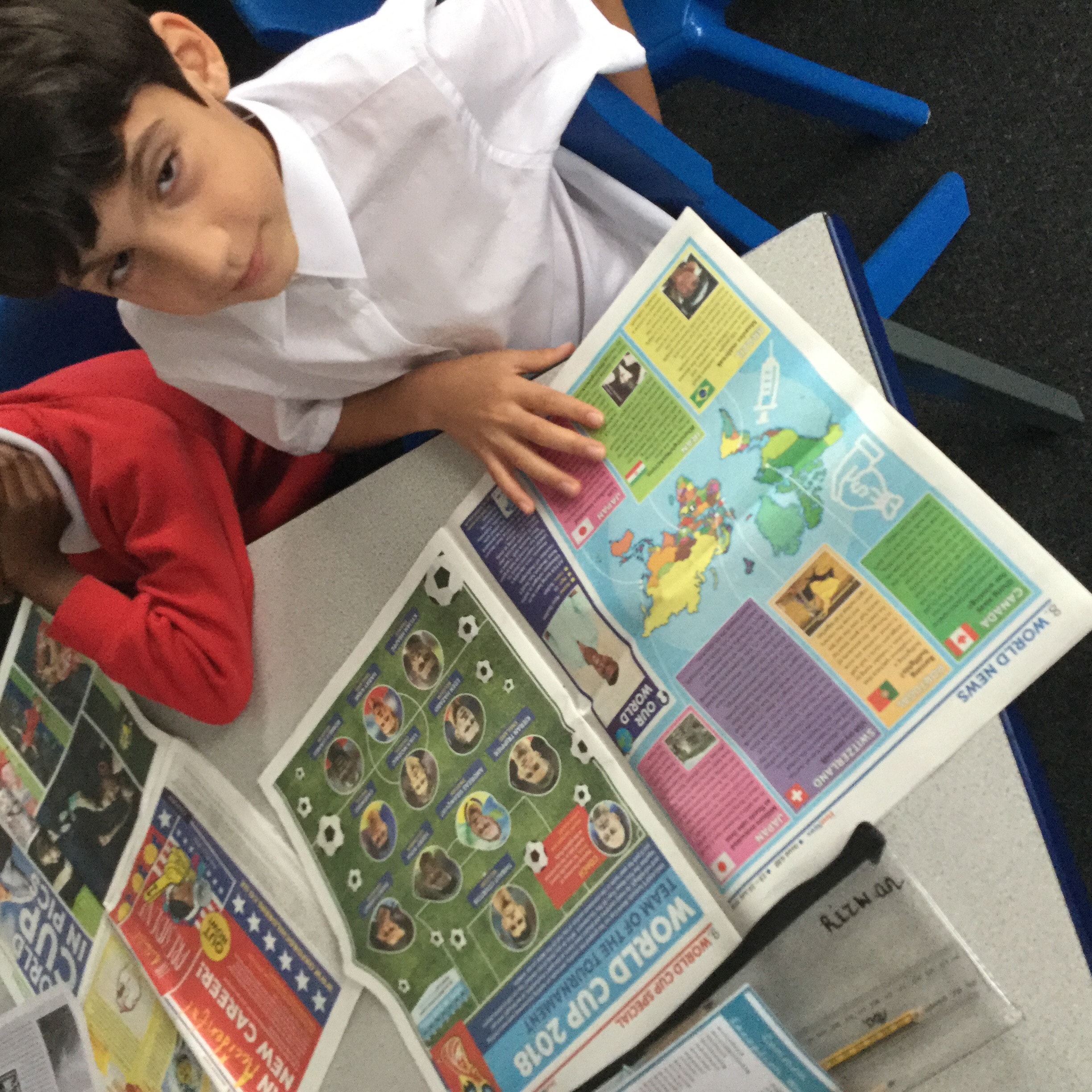
 After reading, we share any interesting articles or fun facts that we’ve discovered with each other as a speaking and listening exercise.
After reading, we share any interesting articles or fun facts that we’ve discovered with each other as a speaking and listening exercise.
Encourage your child to share what they read during today’s session, at home.
We’re ready and responding in Year 2
This week, Year 2 have continued to demonstrate great listening and learning skills as we settle in to new routines and lessons. Being ready and responding to feedback are the two 8Rs for learning we are focusing on this week. Our 8Rs for learning promote good learning behaviour.

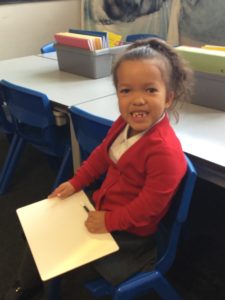

We’ve started to follow daily routines including putting reading books in the reading group baskets. Books will be changed on a Monday and a Thursday but it is important for children to have their books at school every day in case they are reading with an adult. Please do briefly record in their reading record books when your child reads at home.
This week, we met our own material monster, named ‘M and M’, as we begin our new science learning all about materials.



‘This is a peg. It is made from wood and metal.’
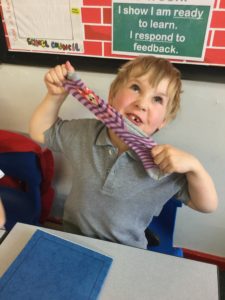
‘This is a __________. It is made from _______.’

‘This is a __________. It is made from _________.’
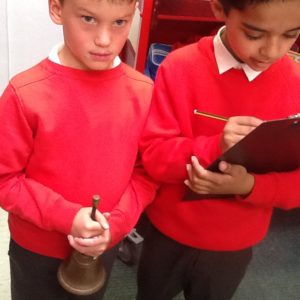
What is the bell made from?

What materials have been used to make the door?
This learning supported our english work of rehearsing sentences. We encourage the children to speak/answer questions in full sentences and then to check their sentence makes sense.
Meanwhile in maths, our focus has been numbers to 100.
In this learning, we’ve used our base 10 resources to create numbers and record using digits and words.



A great start to the week, Year 2!
Drama to aid writing
As part of our writing learning, we channeled our inner thespians today. We’re working on writing a diary about our exploration of the 13 Storey Treehouse and we acted out that exploration in today’s lesson.



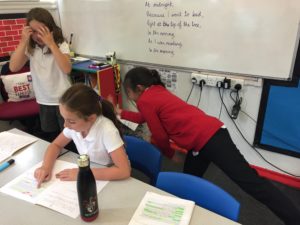
We all chose our favourite pose and created a class freeze-frame of a whole host of emotions.

Platinum award
At the end of each year, schools are invited to apply for their School Games Mark. The School Games Mark rewards schools for their commitment to and development of competition, school sport and physical education.
We’re very proud to announce that our application has been verified and we have been awarded Platinum award.
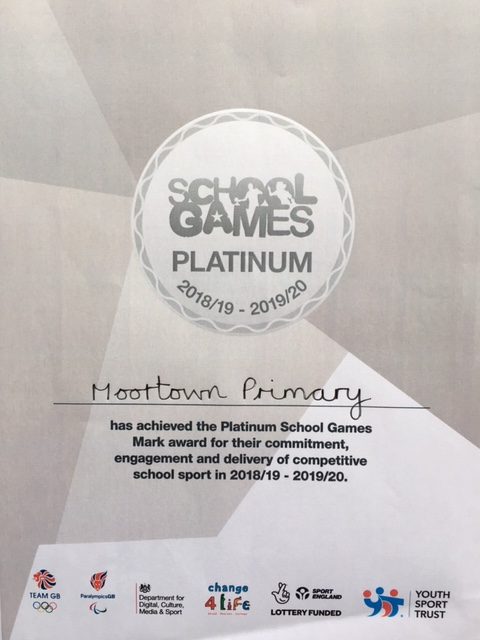
Platinum award is open to schools who have achieved Gold award for the previous four years.
We have achieved this award due to encouraging a large number of children to participate in sporting activity; providing a variety of different sports; partaking in competitions; involving children in leadership activities and having many local links with external clubs and establishments.
Thank you to staff who have accompanied children to these events or run after-school clubs this year. Thank you also to Mrs Russell who provides excellent administration of our clubs and sporting events and competitions. Thank you as well to all parents/carers who have helped with transport and supported at our events this year.
Finally, well done to all pupils who have tried out a new physical activity either at an after-school club or as part of a competition or participation event and to those children who have represented our school so well this year.
KS2 fruit tuck shop
Our popular Key Stage 2 fruit tuck shop runs every Tuesday playtime and regularly sells over one hundred portions of fruit.
The dates for the tuck shop for this year are:
Autumn term Tuesday 24 September 2019 to Tuesday 17 December 2019 inclusive
Spring term Tuesday 14 January 2020 to Tuesday 31 March 2020 inclusive
Summer term Tuesday 28 April 2020 to Tuesday 14 July 2020 inclusive
This year we’ll continue with the pre-payment option so that you pay in advance for the whole year for your child to have fruit from the tuck shop. We know that some children like to buy more than one portion of fruit, either for variety or to top up their packed lunch and we can also offer the option of paying for two items.
As an incentive for selecting the pre-pay option, we’re able to offer you one week per term free. Therefore for this year, you’d pay for 31 weeks and receive fruit for 34 weeks. The cost for one portion of fruit for this year is £6.20 and the cost for two portions is £12.40.
Please note that payments are non-refundable and should be made via School Gateway. If you prefer your child to pay in cash on a weekly basis, that’s fine – we’ll continue to operate this system. Each portion of fruit costs 20p.
If you’d like to pay in advance for your child to visit the tuck shop, please do this via School Gateway, under the payment option, by Friday 20 September 2019.
Thank you for your support for the fruit tuck shop.
Reading Books
This year, readings books will work slightly differently. Some children will have brought a book from school which is their guided reading book. They will have a target page for this book which is recorded in their homework book.
Other children have chosen to read a book from home as their guided reading book and have been asked to bring this in on Friday when we share our reading. Please check that you’re happy with your child bringing their chosen book to school and I will check that I’m happy that the book they’ve chosen will challenge them sufficiently.
Welcome back
It was great to see so many smiling faces today when the children returned to school following the summer break. The class quickly settled into Year 2 and followed all their new routines. All the adults were impressed by the ‘readiness to learn attitudes’ on display.

This afternoon, we thought about our upcoming new topic learning. Using some clues, the children were asked to predict what our new topic may be. Through some drama, the class observed all the clues and shared their ideas.
Below are some of the clues.
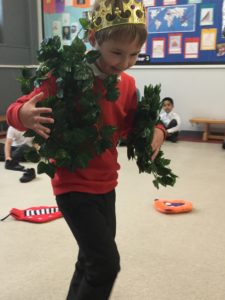


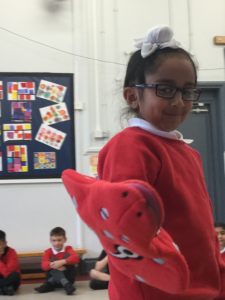

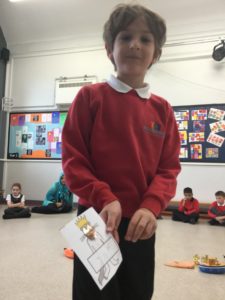

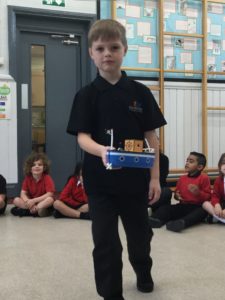
I wonder if there is some water?
I think that there are untamed animals.
The vines could be a forest.
The BFG has huge feet.
I think there are monsters.
The lesson was great fun and full of great predicting and interpreting skills.
Our new topic is based around…
There’s so much more in this book than just the reading. It’s a simple story with a few characters and a whole lot of imagination. It’s an amazing story to read out loud.
Where the Wild Things Are is a well known, classic children’s book. It works because of its simplicity, and its underlying charm, as well as the originality of its illustrations.
Our topic will be driven by design and technology culminating in the making of a sailboat. Also, there will be links to reading, writing and maths within our lessons. Vocabulary, linked to DT and the text, will become more familiar to the children as we move through our topic sessions.